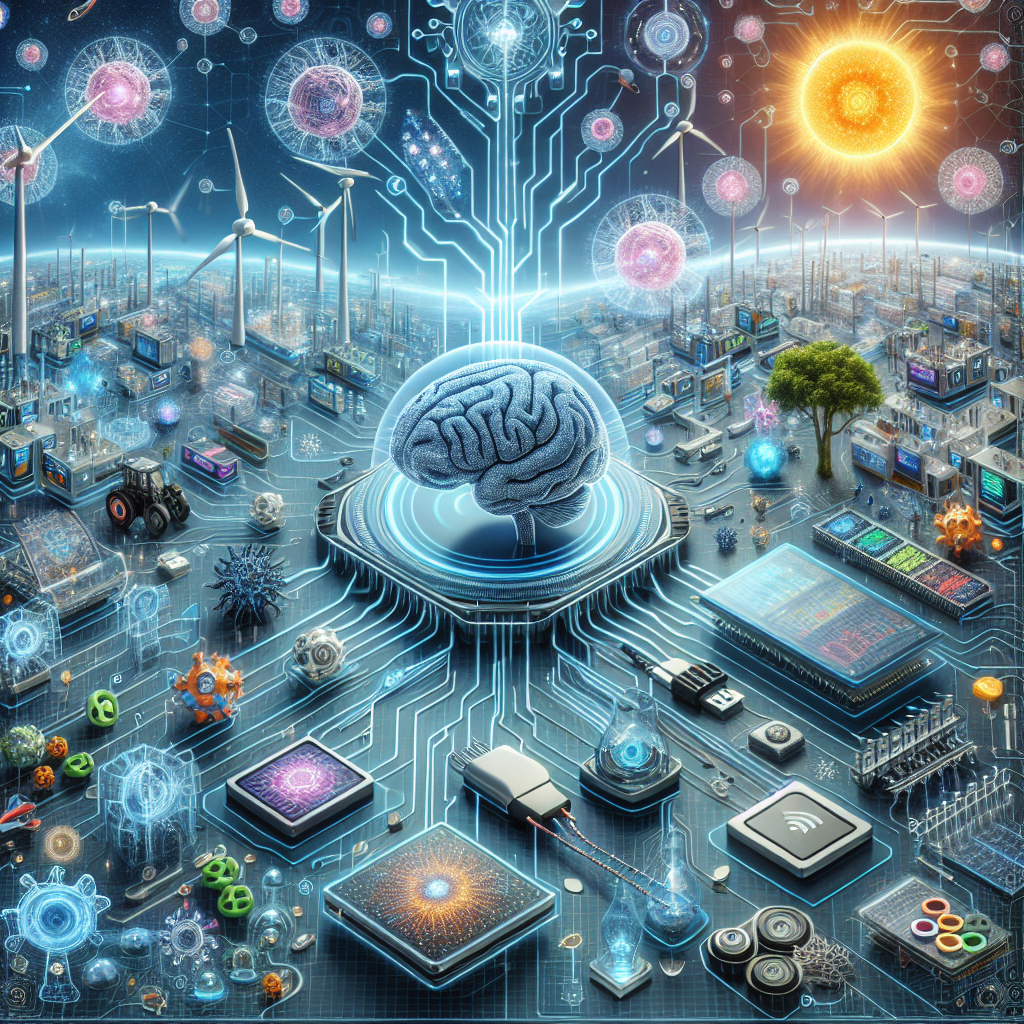The Integration of AI and Machine Learning in Energy Management
In recent years, the integration of artificial intelligence (AI) and machine learning (ML) technologies in energy management has revolutionized the way organizations optimize their energy usage and reduce costs. These advanced technologies have enabled companies to analyze massive amounts of data in real-time, identify patterns, and make accurate predictions to improve energy efficiency and sustainability.
AI and ML in energy management have the potential to transform the way industries consume and manage energy. By leveraging these technologies, organizations can optimize energy consumption, reduce operational costs, and minimize their carbon footprint. In this article, we will explore the benefits of integrating AI and ML in energy management and how companies can leverage these technologies to achieve their sustainability goals.
Benefits of AI and ML in Energy Management
1. Predictive Maintenance: One of the key benefits of AI and ML in energy management is predictive maintenance. By analyzing historical data and identifying patterns, these technologies can predict when equipment is likely to fail, allowing organizations to proactively address maintenance issues before they lead to costly downtime. This not only helps companies reduce maintenance costs but also improves the overall reliability of their energy systems.
2. Energy Optimization: AI and ML algorithms can analyze real-time data from sensors and meters to optimize energy consumption in buildings, factories, and other facilities. By identifying patterns and trends in energy usage, these technologies can automatically adjust settings to minimize energy waste and maximize efficiency. This results in significant cost savings for organizations while reducing their environmental impact.
3. Demand Response: AI and ML technologies can also help organizations participate in demand response programs by predicting peak demand periods and adjusting energy usage accordingly. By automatically reducing energy consumption during peak hours, companies can earn incentives from utilities and contribute to a more stable and reliable grid.
4. Renewable Energy Integration: As organizations increasingly adopt renewable energy sources like solar and wind power, AI and ML can help optimize the integration of these sources into the energy grid. By analyzing weather patterns and energy production data, these technologies can predict when renewable energy sources will be most productive and adjust energy consumption accordingly. This allows companies to maximize their use of renewable energy while minimizing reliance on traditional fossil fuels.
5. Behavioral Analysis: AI and ML can also be used to analyze human behavior and its impact on energy usage. By tracking patterns in employee behavior, such as occupancy levels and temperature preferences, organizations can adjust settings to optimize energy consumption and improve comfort levels. This not only reduces energy waste but also enhances the overall employee experience.
How Companies Can Leverage AI and ML in Energy Management
To leverage AI and ML in energy management, organizations should follow these key steps:
1. Data Collection: The first step in implementing AI and ML in energy management is to collect and integrate data from various sources, such as sensors, meters, and weather forecasts. This data will serve as the foundation for training AI algorithms and making informed decisions about energy usage.
2. Data Analysis: Once the data is collected, organizations can use AI and ML algorithms to analyze patterns, trends, and anomalies in energy consumption. By identifying areas of inefficiency and opportunities for optimization, companies can develop strategies to improve energy management.
3. Model Development: Organizations should develop predictive models using AI and ML algorithms to forecast energy usage, identify potential savings opportunities, and optimize energy consumption. These models can be continuously updated and refined based on new data to improve accuracy and effectiveness.
4. Implementation: After developing predictive models, organizations should implement them in their energy management systems to automate decision-making processes and optimize energy usage in real-time. This may involve integrating AI and ML algorithms with existing energy management software or developing custom solutions tailored to specific needs.
5. Monitoring and Evaluation: Finally, companies should continuously monitor the performance of their AI and ML algorithms to ensure they are achieving the desired outcomes. By tracking key performance indicators and evaluating the impact of their energy management strategies, organizations can make informed decisions to further optimize their operations.
FAQs
Q: How can AI and ML help organizations reduce energy costs?
A: AI and ML technologies can analyze data in real-time to identify patterns and trends in energy consumption, allowing organizations to optimize their energy usage and reduce costs.
Q: What are the key benefits of predictive maintenance in energy management?
A: Predictive maintenance enables organizations to proactively address equipment failures before they occur, reducing downtime and maintenance costs while improving reliability.
Q: How can AI and ML help companies integrate renewable energy sources into their operations?
A: AI and ML algorithms can predict when renewable energy sources will be most productive and adjust energy consumption accordingly, allowing companies to maximize their use of renewable energy.
Q: What role does behavioral analysis play in energy management?
A: Behavioral analysis helps organizations understand how human behavior impacts energy usage, allowing them to optimize settings and improve energy efficiency while enhancing the overall employee experience.
In conclusion, the integration of AI and ML in energy management offers significant benefits for organizations looking to optimize their energy consumption, reduce costs, and achieve sustainability goals. By leveraging these advanced technologies, companies can proactively address maintenance issues, optimize energy usage, participate in demand response programs, integrate renewable energy sources, and analyze human behavior to improve energy efficiency. With the right strategies and tools in place, organizations can harness the power of AI and ML to transform the way they manage energy and contribute to a more sustainable future.

